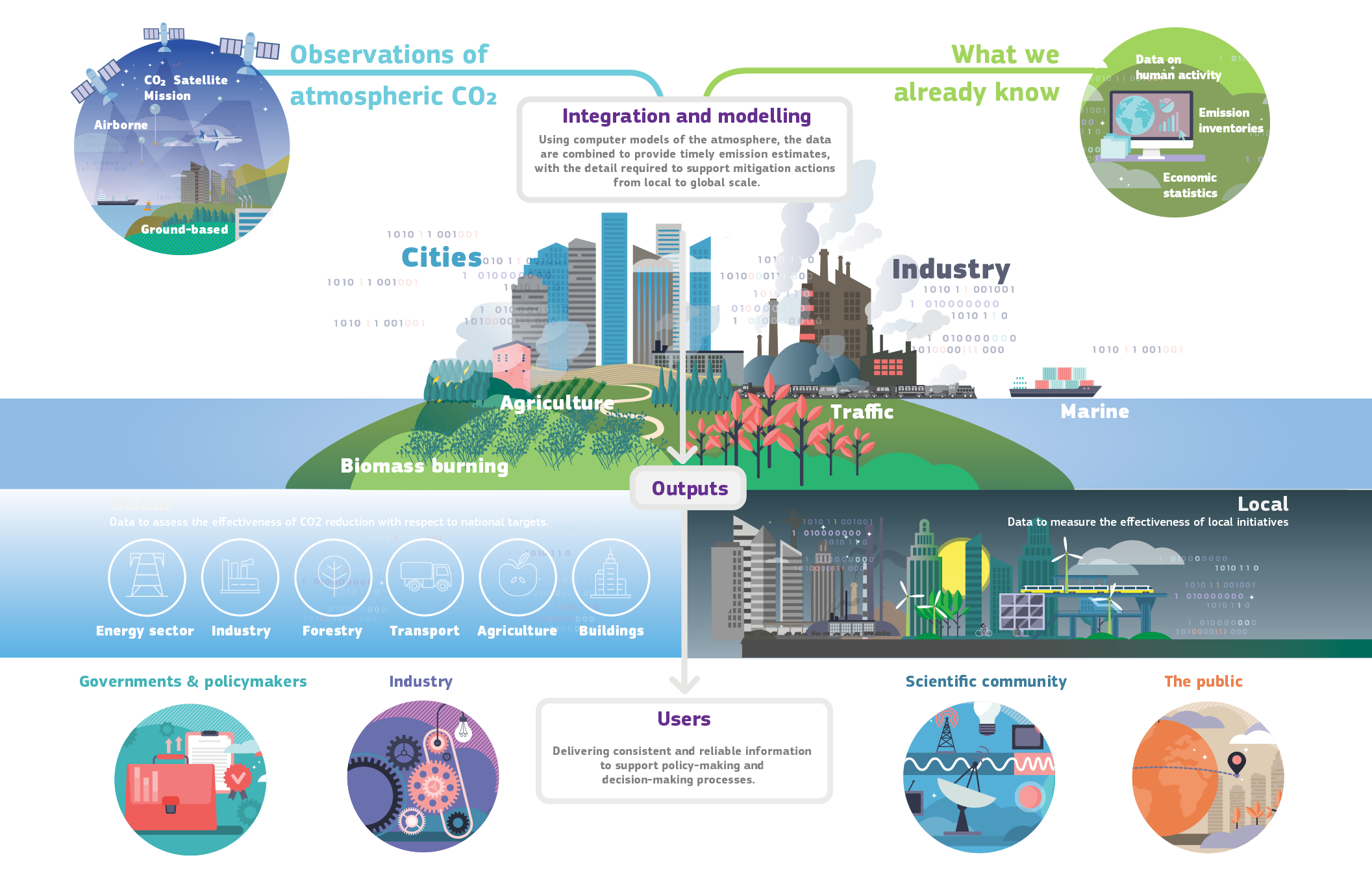The Prototype system for a Copernicus CO2 service (CoCO2) project will deliver the prototype systems for a new European anthropogenic CO2 emissions monitoring and verification support capacity (CO2MVS) that can be implemented within the Copernicus programme as one of its service elements with the aim to deliver policy-relevant information.

The overall concept of the CO2MVS combines the information from observational data sets (satellite and in-situ) and information from prior knowledge (e.g., actual, estimated or projected emission inventories) with detailed computer models of the Earth system that represent in particular the sources, sinks and transport of CO2 in the atmosphere in a Bayesian estimation framework, i.e., by minimising a cost function in a mathematically rigorous approach to correctly account for the uncertainties in observations, priors and models to estimate the required outputs, in this case anthropogenic CO2 emissions at various scales. This will bring the same level of mathematical rigour to the CO2MVS system that has proven critically important in other application areas, such as Numerical Weather Prediction and air quality forecasting.
Two main challenges need to be addressed by the CO2MVS: i) observations do not directly measure anthropogenic emissions and ii) the signal of anthropogenic emissions in the variables we can observe (e.g., atmospheric CO2) is very small relative to the signal of natural fluxes between the land and ocean surfaces and the atmosphere. To face these challenges the CO2MVS foresees state-of-the-art computer models of the Earth system that can simulate the variables that are observed based on prescribed or modelled emissions and fluxes. Advanced data assimilation methods can then make adjustments to the emissions and fluxes that are consistent with the information from the observations and constrained with physical knowledge encapsulated in the models. The models need to be comprehensive and detailed to capture all relevant processes that determine the value of the observed variables.